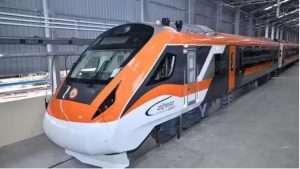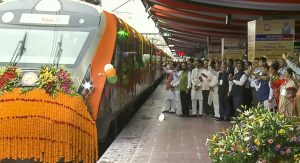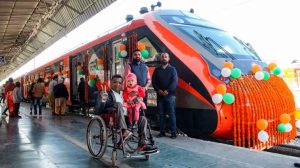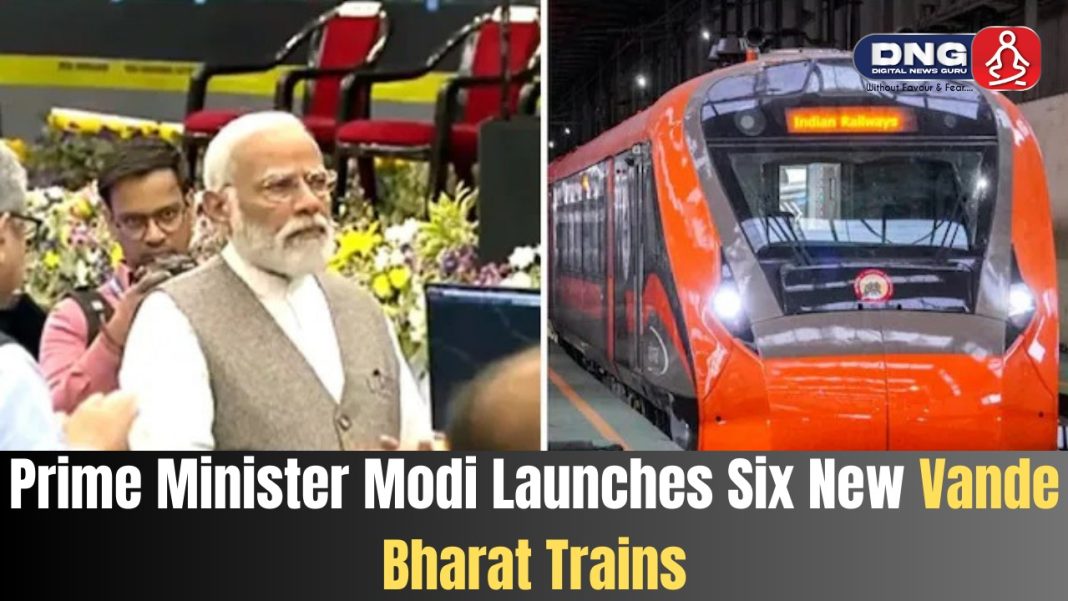DIGITAL NEWS GURU DELHI DESK:
Prime Minister Modi Launches Six New Vande Bharat Trains
On September 15, 2024, Prime Minister Narendra Modi flagged off six new Vande Bharat Express trains, marking a significant milestone in India’s rapidly evolving railway infrastructure.
This expansion aligns with the government’s mission to enhance connectivity, reduce travel time, and offer world-class services to passengers. The newly introduced trains will operate across various regions, connecting important cities and states, and boosting tourism, trade, and overall mobility. The initiative reinforces the government’s commitment to transforming the Indian Railways into a global standard of efficiency and modernity.
The Significance of the Vande Bharat Trains

The Vande Bharat Express, often dubbed as India’s semi-high-speed train, represents a cutting-edge leap in the country’s rail transport. Manufactured domestically under the “Make in India” initiative, these trains boast advanced features like onboard Wi-Fi, GPS-based passenger information systems, bio-vacuum toilets, and comfortable seating. The trains are designed to operate at speeds of up to 160 km/h, significantly reducing travel times across various routes. By adding six new trains to the fleet, the government is extending these modern benefits to more regions, underlining the importance of efficient, rapid transit in the country’s development strategy.
The New Routes and Their Impact

The newly inaugurated Vande Bharat trains will run across crucial routes that connect smaller towns to major cities, thereby enhancing regional connectivity. These trains include routes like:
- Tatanagar-Patna
- Deoghar-Varanasi
- Tatanagar-Berhampur (Odisha)
- Ranchi-Howrah
The addition of these routes will significantly shorten travel times between key destinations. For instance, the Tatanagar-Patna train will cut down hours of travel time, improving accessibility to Bihar’s capital from Jharkhand’s industrial hub. Similarly, the Deoghar-Varanasi route will enhance connectivity between two important religious cities, promoting spiritual tourism and easing travel for devotees.
The broader aim of these routes is not only to improve passenger comfort and speed but also to serve the socio-economic needs of these regions. By connecting smaller cities with metropolises, the government aims to unlock new opportunities for trade, tourism, and education.
Boost to Regional Development

The introduction of the new Vande Bharat trains is expected to catalyze regional development, particularly in the relatively under-served states of Jharkhand, Bihar, and Odisha. These areas have long been in need of improved connectivity to larger economic centers like Kolkata, Patna, and Varanasi.
Enhanced railway connectivity is likely to stimulate local economies by improving access to markets, reducing transportation costs for goods, and facilitating the movement of people for employment opportunities. This is particularly important for smaller towns and cities that lack the robust infrastructure seen in India’s larger urban centers.
For example, Berhampur in Odisha, known for its silk sarees and a growing economy, will now be better connected to the rest of the country. This will provide local artisans and traders with better access to larger markets, boosting local industries. Similarly, Deoghar’s status as a major pilgrimage center will likely attract more visitors, fostering the local economy through tourism and related services.
Focus on Sustainability and Passenger Experience
One of the key highlights of the Vande Bharat trains is their focus on sustainability. These trains are energy-efficient, equipped with regenerative braking systems that help reduce energy consumption by 30%. The coaches are also built with lightweight materials that enhance fuel efficiency, making them both environmentally friendly and cost-effective.
In terms of passenger experience, the Vande Bharat trains offer a host of modern amenities. Each train is fitted with automatic doors, reclinable seats, and ample luggage space, ensuring a comfortable journey for passengers. Additionally, the incorporation of bio-vacuum toilets and eco-friendly waste management systems reflects the government’s broader push for sustainable infrastructure development.
The seamless Wi-Fi service and GPS-enabled passenger information systems further contribute to a state-of-the-art travel experience. For those traveling long distances, these features enhance the journey, offering a glimpse of what India’s future railways will look like—modern, efficient, and passenger-centric.
Political and Strategic Implications
The launch of the new Vande Bharat trains is not just a technological leap but also carries substantial political significance. Prime Minister Modi’s focus on developing infrastructure, especially in states like Jharkhand, Odisha, and Bihar, is part of a broader strategy to ensure balanced regional development across India. These areas have often lagged behind more developed states in terms of transportation and industrial growth, and improved rail connectivity is seen as a key step toward leveling the playing field.
Moreover, the new trains align with the government’s emphasis on boosting domestic manufacturing under the “Make in India” campaign. By producing these trains locally, India is not only modernizing its railways but also bolstering its industrial sector, creating jobs, and reducing dependency on imports.
YOU MAY ALSO READ: Typhoon Yagi’s Impact: A Devastating Blow to Vietnam








